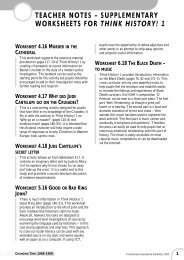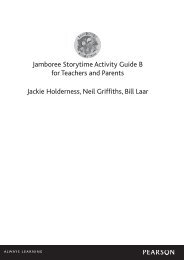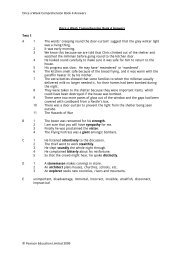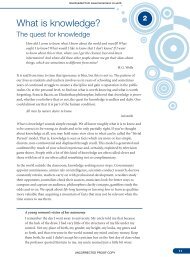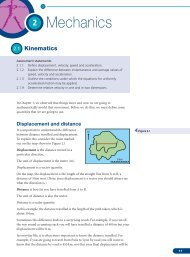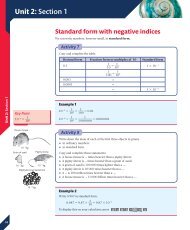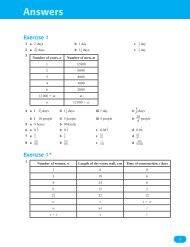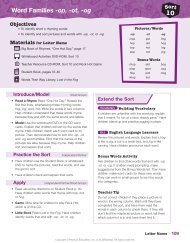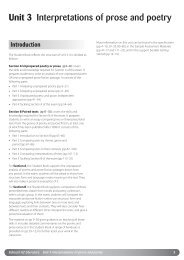Edexcel IGCSE Geography Chapter 1 - Pearson Schools
Edexcel IGCSE Geography Chapter 1 - Pearson Schools
Edexcel IGCSE Geography Chapter 1 - Pearson Schools
Create successful ePaper yourself
Turn your PDF publications into a flip-book with our unique Google optimized e-Paper software.
As lateral erosion continues, the bend of a meander becomes even more pronounced(Figure 1.16). Especially in times of flood, when the river’s energy is much greater,the narrow neck of the meander may be breached (broken and crossed) so that theriver flows straight again. The redundant meander loop retains some water andbecomes an ox-bow lake. Deposition during the flooding helps to seal off the edgesand ends of the lake.Figure 1.17: Mississippi meanders and ox-bow lakesLateral erosion on the outside banks of meanders helps to widen the flood plain.Flood plains have great value for people. Flat land with rich, thick alluvial soils andnearby, plentiful water is attractive to agriculture, industry and urban settlements.Rivers meander naturally. The meanders migrate across the flood plain as theoutside of the meander erodes laterally (sideways). Figure 1.17 shows a small partof the complicated meander pattern of the Mississippi River.Try researching two facts about theMississippi River:• the actual length of the river from itssource to the sea• the straight-line distance from itssource to the sea.What does this tell you about the amountof meandering the river does?<strong>Chapter</strong> 1: River environmentsFigure 1.18: Satellite image of part of the Ganges−Brahmaputra delta. It also showshuge amounts of silt being deposited in the waters of the Bay of Bengal.13



